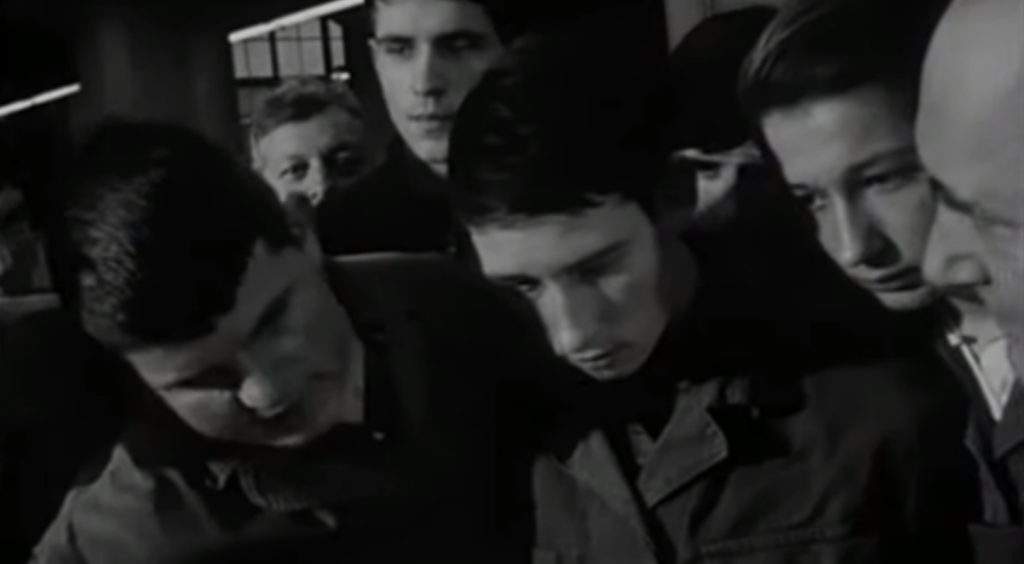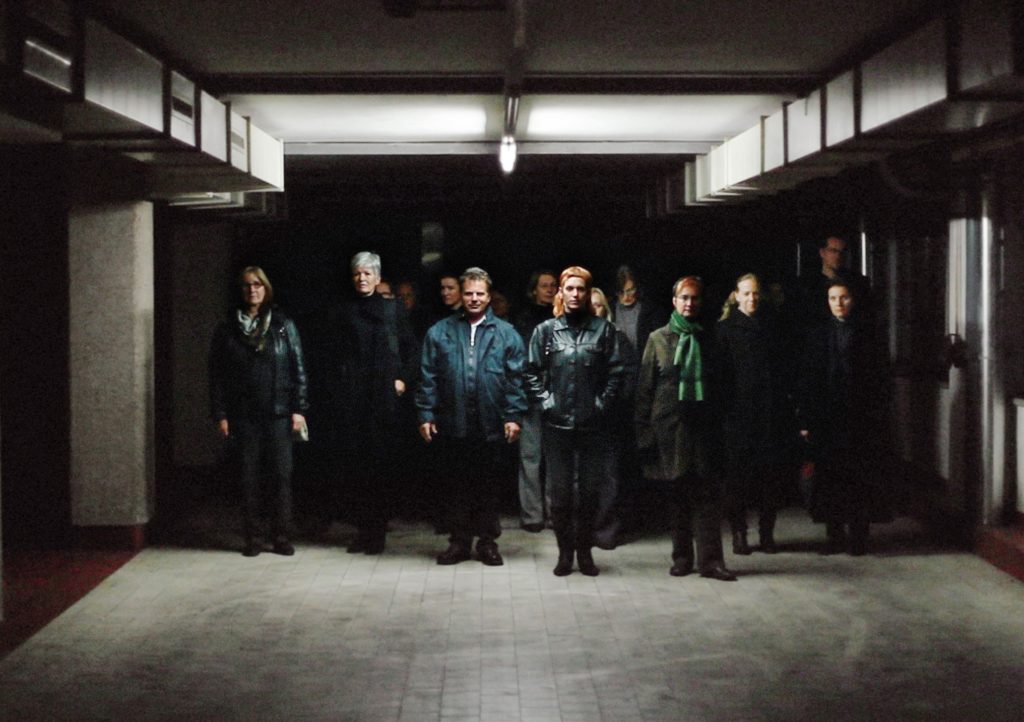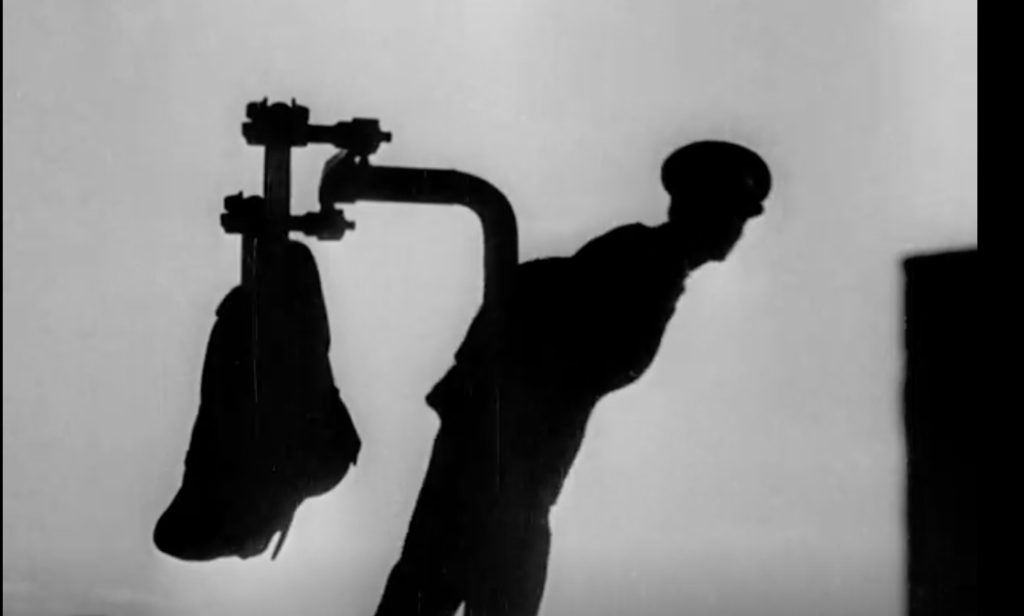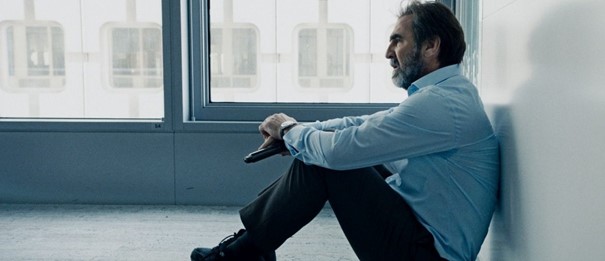“Women in the Playpen”. Female Role Models and Swiss Vocational Education
Iris von Roten (1917–1990) was a trained lawyer and a feminist of the pre-68 era. Among other things, she campaigned for women’s suffrage, which was introduced in Switzerland — believe it or not — in 1971. From today’s point of view, it is difficult to understand why it still took a decade until equality between men and women was enshrined in the Swiss Federal Constitution. After a tough but successful referendum campaign in 1985, a new marriage law was introduced, finally in 1988, which no longer considered the man as the head of the family. Until then, wives had no contractual rights, they were not allowed to open a bank account, and could not engage in gainful employment without their husbands’ consent.
The role of women was thus bound by clear limits, in the workplace and in society. The atmosphere and discussion surrounding the introduction of women’s suffrage is also aptly reflected in the successful and witty feature film “Die göttliche Ordnung” (The Divine Order) (2017) by Petra Volpe. The movie brings a younger generation closer to the disputes of that time, which seem to be far in the past.
To break up this hemmed-in image of women was Iris von Roten’s ambition with her book “Frauen im Laufgitter” (Women in the Playpen/“Babyjail”), published in 1958. The book was considered scandalous and brought her fierce reactions, today one would say a downright “shitstorm”. The questioning of a specific otherness of women, for whom only a segregated sphere away from politics and the public was foreseen, while also being excluded from a large part of the working world, was seen as an outrageous attack. In addition to topics such as “Women and Love,” “Motherhood”, “The Household”, according to the titles of the individual chapters, she then devotes a large chapter to female gainful employment and professional life in a Man’s World titled “People of Brothers without Sisters”.
What career paths were open to women in the 1950s? Actually, only the professions and activities that were of no interest to men and that did not challenge the subservient role of women. Women were supposed to be women doing housework. If they did work, however, they were expected to work primarily in three occupations, namely as
the “maid”,
the “nurse”,
or the “office maid”, or as
the clerk in the Federal Palace in Bern barred from marriage.
The job situation of women, formulated by the author with powerful language, was presented and visualized in detail in the first exhibition space in the Strauhof. The assigned occupations are described verbatim in detail by four actresses on screen (curated by Mass&Fieber). With the filmed statements, the job situation and position in the working world of women at that time can be reconstructed in a performative way, and one involuntarily asks oneself about the situation of today.
All these roles of serving, caring and confirming the male hegemony were practically until recently one of the few possibilities available to women to earn extra income — of course far below the wages of men. Iris von Roten also points out, for example, that the Kaufmännische Verband Schweiz (Swiss Commercial Association) did not accept women working in the same profession until 1905 as members, years after its establishment in 1873.
Until the 1960s, the increasing proportion of women in commercial professions was viewed critically. On the occasion of the preparation of a cantonal law concerning the execution of the federal law on vocational training (of December 3, 1967), the Zurich Department of Economic Affairs noted with some concern that a “trend” was becoming increasingly apparent “that the proportion of female apprentices was growing”. Indeed, the proportion of female students entering commercial vocational schools had risen to 60%, and in some vocational schools the proportion was two-thirds. The new draft of the federal standard curriculum “therefore provides for a division of the commercial apprenticeship into an accounting/calculating and into a linguistic/office-administerial direction. The latter training option is intended primarily for the next generation of women, who have to deal mainly with correspondence and secretarial work” (Direktion der Volkswirtschaft 1967, p. 186).
In vocational education, too, women have often had to forge their place against much resistance. It was precisely the rise of regular vocational training in the continuing economic boom, and the expansion of education, that helped to make women more “visible” in the world of work and in the public eye. However, I wonder if we are really that much further along today, and if the occupational narrative of serving, nurturing, and caring doesn’t pervade into today’s occupations as a sort of subtext, despite the progress towards non-gendered language. After all, most professions with a strong female presence are, as they have always been, in care, sales and commercial activities. Significantly, to this day, wages in these former and current “female” professions are also at the lower end of qualified training.
Whereas for some occupations there was the alleged danger of too many female applicants, today there is concern that too few young women are expressing interest in careers other than academic professions. The debate that has been emerging for some years regarding a lack of skilled workers in the STEM (Sciences, Technology, Engineering & Mathematics) sector is leading to the consideration of new paths and provisions, whether in vocational training or in gymnasia.
The question is how can “gender-typical” subject-related choices and later professional and career decisions be adjusted. In this context, the decision-making behaviour of young women is of particular interest, because the proportion in engineering professions is far too low, especially in comparison with the proportion of female engineers in other countries (see Gonon 2023: Studying a Craft, p. 183 ff.). The sector seems to be “undermanned” when women are asked today to please consider computer science and engineering more strongly as a career prospect. The assignment and attribution of a pre-determined image to the profession of women, as impressively shown in the video sequences, prove to be a barrier that cannot be justified in any way. We owe to Iris von Rotten’s stirring presentation — visualized in the Strauhof — for having encouraged such a mental unleashing with an appeal to break women out of the playpen.
Philipp C. Gonon is professor emeritus of vocational education at the University of Zurich with a focus on international comparative education policy and historical education research, as well as a film buff.
References:
Roten I. (2020). Frauen im Laufgitter. Zürich eFeF Verlag
Gonon, P. (2023) Ein Handwerk studieren. Bern: hep
Zürcher Volkswirtschaftsdirektion (1967). Geschäftsbericht – Berufliches Bildungswesen, S. 183–189. Zürich
Schwesternberufe, 2021 CH, Museum Strauhof, mass&fieber (with EN subtitles)
Fräuleinberufe, 2021 CH, Museum Strauhof, mass&fieber
The Divine Order (CH 2016, Petra Volpe), Trailer, EN Subtitles
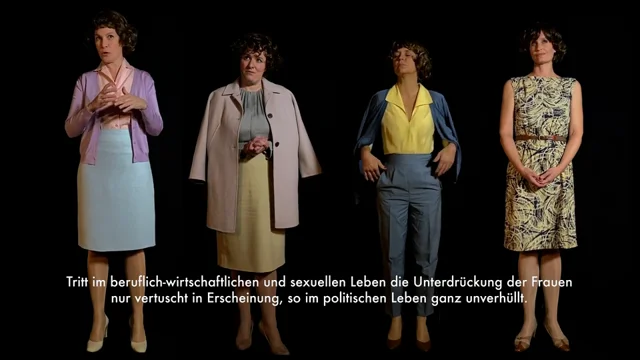
Filmstill, "Die ureigene Natur der Frau – Frauen, Mädchen, Töchterberufe", 2021
© MASS & FIEBER, Museum Strauhof
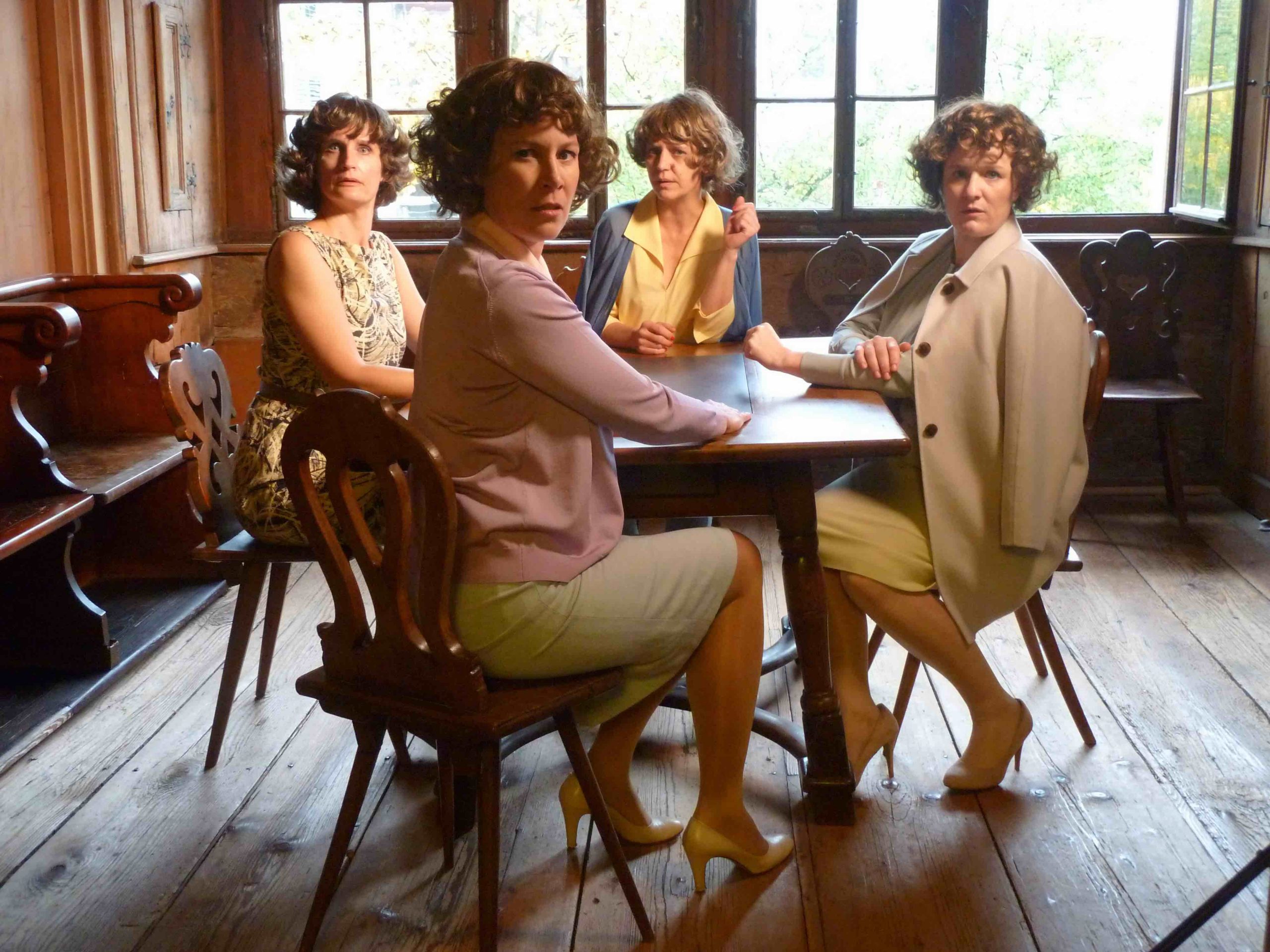
Filmstill/Set, "Die ureigene Natur der Frau – Frauen, Mädchen, Töchterberufe", 2021
© MASS & FIEBER, Museum Strauhof
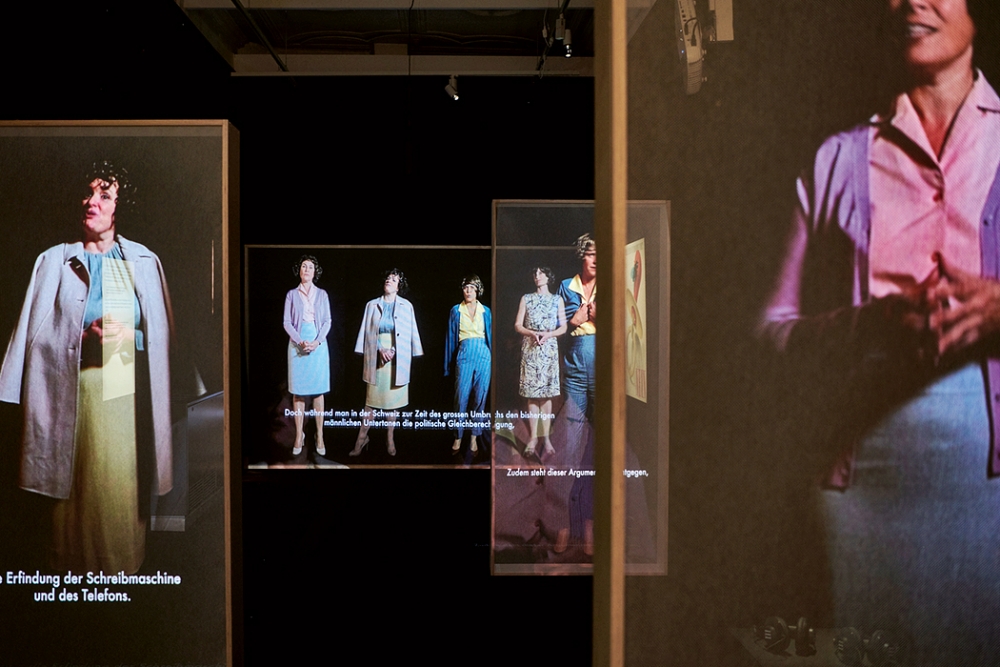
Exhibition "Iris von Roten – Frauen im Laufgitter", Museum Strauhof, Zurich, 2021
© MASS & FIEBER, Museum Strauhof
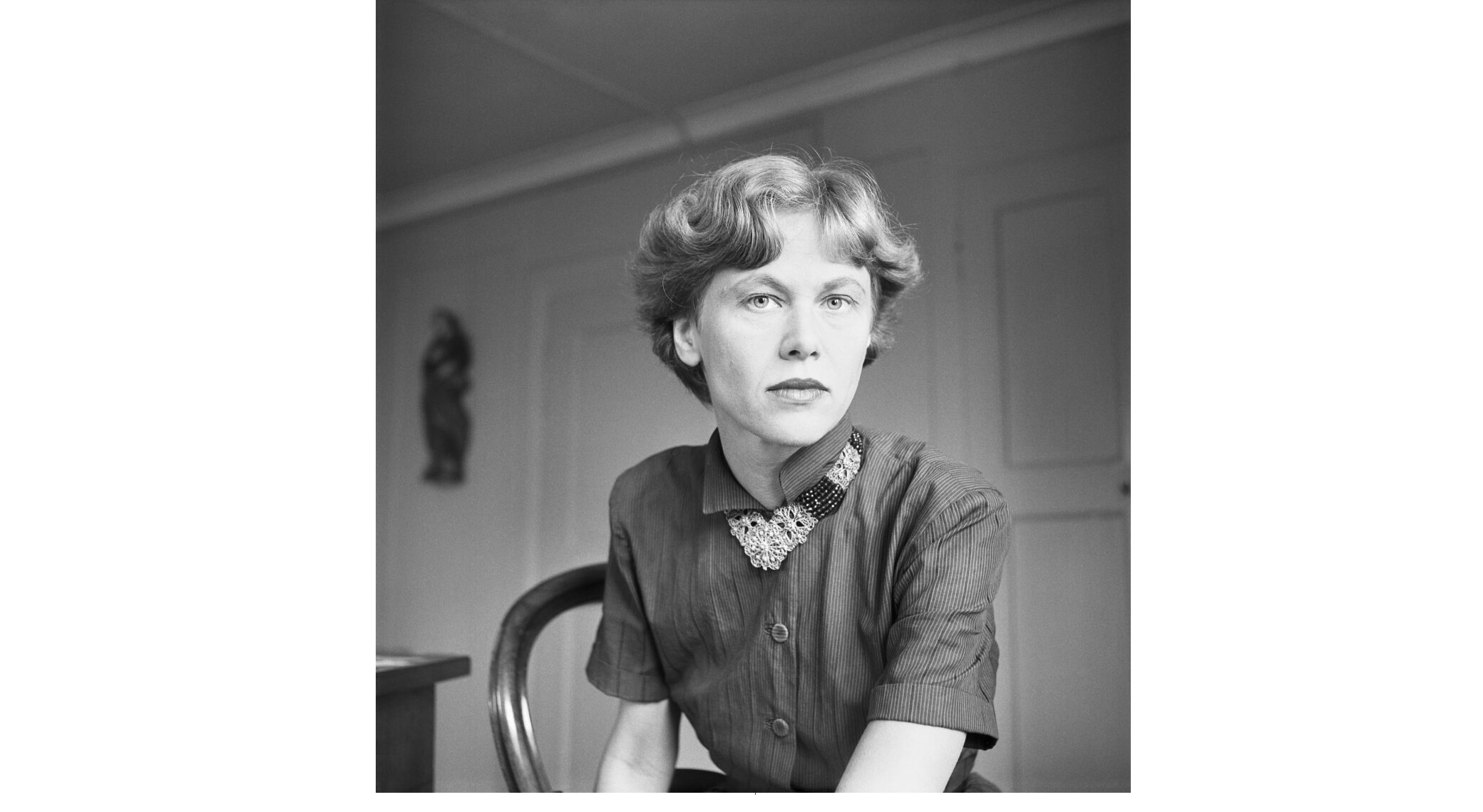
Iris von Roten
© Museum Strauhof

Original edition "Frauen im Laufgitter", 1958
© booklooker
“Women in the Playpen”. Female Role Models and Swiss Vocational Education
Iris von Roten (1917–1990) was a trained lawyer and a feminist of the pre-68 era. Among other things, she campaigned for women’s suffrage, which was introduced in Switzerland — believe it or not — in 1971. From today’s point of view, it is difficult to understand why it still took a decade until equality between men and women was enshrined in the Swiss Federal Constitution. After a tough but successful referendum campaign in 1985, a new marriage law was introduced, finally in 1988, which no longer considered the man as the head of the family. Until then, wives had no contractual rights, they were not allowed to open a bank account, and could not engage in gainful employment without their husbands’ consent.
The role of women was thus bound by clear limits, in the workplace and in society. The atmosphere and discussion surrounding the introduction of women’s suffrage is also aptly reflected in the successful and witty feature film “Die göttliche Ordnung” (The Divine Order) (2017) by Petra Volpe. The movie brings a younger generation closer to the disputes of that time, which seem to be far in the past.
To break up this hemmed-in image of women was Iris von Roten’s ambition with her book “Frauen im Laufgitter” (Women in the Playpen/“Babyjail”), published in 1958. The book was considered scandalous and brought her fierce reactions, today one would say a downright “shitstorm”. The questioning of a specific otherness of women, for whom only a segregated sphere away from politics and the public was foreseen, while also being excluded from a large part of the working world, was seen as an outrageous attack. In addition to topics such as “Women and Love,” “Motherhood”, “The Household”, according to the titles of the individual chapters, she then devotes a large chapter to female gainful employment and professional life in a Man’s World titled “People of Brothers without Sisters”.
What career paths were open to women in the 1950s? Actually, only the professions and activities that were of no interest to men and that did not challenge the subservient role of women. Women were supposed to be women doing housework. If they did work, however, they were expected to work primarily in three occupations, namely as
the “maid”,
the “nurse”,
or the “office maid”, or as
the clerk in the Federal Palace in Bern barred from marriage.
The job situation of women, formulated by the author with powerful language, was presented and visualized in detail in the first exhibition space in the Strauhof. The assigned occupations are described verbatim in detail by four actresses on screen (curated by Mass&Fieber). With the filmed statements, the job situation and position in the working world of women at that time can be reconstructed in a performative way, and one involuntarily asks oneself about the situation of today.
All these roles of serving, caring and confirming the male hegemony were practically until recently one of the few possibilities available to women to earn extra income — of course far below the wages of men. Iris von Roten also points out, for example, that the Kaufmännische Verband Schweiz (Swiss Commercial Association) did not accept women working in the same profession until 1905 as members, years after its establishment in 1873.
Until the 1960s, the increasing proportion of women in commercial professions was viewed critically. On the occasion of the preparation of a cantonal law concerning the execution of the federal law on vocational training (of December 3, 1967), the Zurich Department of Economic Affairs noted with some concern that a “trend” was becoming increasingly apparent “that the proportion of female apprentices was growing”. Indeed, the proportion of female students entering commercial vocational schools had risen to 60%, and in some vocational schools the proportion was two-thirds. The new draft of the federal standard curriculum “therefore provides for a division of the commercial apprenticeship into an accounting/calculating and into a linguistic/office-administerial direction. The latter training option is intended primarily for the next generation of women, who have to deal mainly with correspondence and secretarial work” (Direktion der Volkswirtschaft 1967, p. 186).
In vocational education, too, women have often had to forge their place against much resistance. It was precisely the rise of regular vocational training in the continuing economic boom, and the expansion of education, that helped to make women more “visible” in the world of work and in the public eye. However, I wonder if we are really that much further along today, and if the occupational narrative of serving, nurturing, and caring doesn’t pervade into today’s occupations as a sort of subtext, despite the progress towards non-gendered language. After all, most professions with a strong female presence are, as they have always been, in care, sales and commercial activities. Significantly, to this day, wages in these former and current “female” professions are also at the lower end of qualified training.
Whereas for some occupations there was the alleged danger of too many female applicants, today there is concern that too few young women are expressing interest in careers other than academic professions. The debate that has been emerging for some years regarding a lack of skilled workers in the STEM (Sciences, Technology, Engineering & Mathematics) sector is leading to the consideration of new paths and provisions, whether in vocational training or in gymnasia.
The question is how can “gender-typical” subject-related choices and later professional and career decisions be adjusted. In this context, the decision-making behaviour of young women is of particular interest, because the proportion in engineering professions is far too low, especially in comparison with the proportion of female engineers in other countries (see Gonon 2023: Studying a Craft, p. 183 ff.). The sector seems to be “undermanned” when women are asked today to please consider computer science and engineering more strongly as a career prospect. The assignment and attribution of a pre-determined image to the profession of women, as impressively shown in the video sequences, prove to be a barrier that cannot be justified in any way. We owe to Iris von Rotten’s stirring presentation — visualized in the Strauhof — for having encouraged such a mental unleashing with an appeal to break women out of the playpen.
Philipp C. Gonon is professor emeritus of vocational education at the University of Zurich with a focus on international comparative education policy and historical education research, as well as a film buff.
References:
Roten I. (2020). Frauen im Laufgitter. Zürich eFeF Verlag
Gonon, P. (2023) Ein Handwerk studieren. Bern: hep
Zürcher Volkswirtschaftsdirektion (1967). Geschäftsbericht – Berufliches Bildungswesen, S. 183–189. Zürich
Schwesternberufe, 2021 CH, Museum Strauhof, mass&fieber (with EN subtitles)
Fräuleinberufe, 2021 CH, Museum Strauhof, mass&fieber
The Divine Order (CH 2016, Petra Volpe), Trailer, EN Subtitles

Filmstill, "Die ureigene Natur der Frau – Frauen, Mädchen, Töchterberufe", 2021
© MASS & FIEBER, Museum Strauhof

Filmstill/Set, "Die ureigene Natur der Frau – Frauen, Mädchen, Töchterberufe", 2021
© MASS & FIEBER, Museum Strauhof

Exhibition "Iris von Roten – Frauen im Laufgitter", Museum Strauhof, Zurich, 2021
© MASS & FIEBER, Museum Strauhof

Iris von Roten
© Museum Strauhof

Original edition "Frauen im Laufgitter", 1958
© booklooker

(Un)responsible work — for us
"Living - once really living" (2022) is the British remake of Akira Kurosawa's 1952 classic "Ikiru". The film addresses a central theme of the working world: taking responsibility. Bill Nighy, perhaps in the role of his life, screenwriter Ishiguro and the film itself have been nominated for several British film awards.
Unfiltered working realities. The apprenticeship of a skilled canner
A critical look at archival vocational guidance films can sharpen one's view of major changes in the world of work and occupations. Making, taking a closer look at a Swiss television report on the apprenticeship of canners from the 1960s, worth it.
Dystopias of the working world
After more than a century, Katharina Gruzei's reinterpretation of the very first film in film history, ‘Workers Leaving the Factory’, shows a grim picture of the world of work and gives food for thought: Has the situation of workers deteriorated so much and what kind of worklife are we even heading towards?
Night Mail — The focus on work
"Night Mail" (1936) was commissioned as an image publicity film by the British General Post Office and went down in film history as a ground-breaking documentary. Directors Harry Watt and Basil Wright succeed in creating an ode to workers and modern technology by enriching their naturalistic style within the film with poetic elements and always keeping the human aspect in mind.
Night Mail — The Poetic Gaze
When the eminent film scholar Amos Vogel was forced to flee Vienna to the United States in 1938, the 17-year-old had already made the decision to devote his life to film. One experience that would define his future was a screening of "Night Mail" (1936) and this film still doesn’t fail to impress today.
Bossnapping à la Cantona
In the last two decades in particular, disputes between management and workers in France have become increasingly intense. The so-called "bossnapping", the hostage taking of management, masterfully staged by Éric Cantona in the Netflix series ‘Inhuman Resources’ (2020), provides a telling example.

About this blog
By selecting a film or an image, this blog literally illustrates the vast sphere of work, employment & education in an open collection of academic, artistic and also anecdotal findings.
About us
Konrad Wakolbinger makes documentary films about work and life. Jörg Markowitsch does research on education and work. They are both based in Vienna. Information on guest authors can be found in their corresponding articles.
More about
Interested in more? Find recommendations on relevant festivals, film collections and literature here.
About this blog
With picking a film or an image, this blog literally illustrates the vast sphere of work, employment & education in an open collection of academic, artistic and also anecdotal findings.
About us
Konrad Wakolbinger makes documentary films about work and life. Jörg Markowitsch does research on education and work. We both work in Vienna. Information on guest authors can be found in their respective articles.
More about
Interested in more? Find recommendations on relevant festivals, film collections and literature here.



